by Emmy van Arent and Trilce Navarrete (Erasmus University Rotterdam).
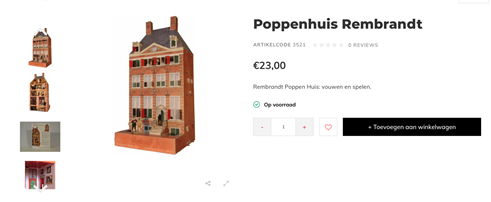
Dollhouse replica of the Rembrandthuis (source: webshop.rembrandthuis.nl)
The COVID-19 pandemic forced museums to close their doors, limiting the dialogue with the public and severely reducing the revenue that is normally generated from ticket sales. Museums responded by providing online content and engaging in an unprecedented online dialogue. What alternative sources of revenue online emerged? A team from the Erasmus University Rotterdam is researching the response of Dutch museums by looking at their online shop, as a distinct cultural digital space reflecting museums’ values. We believe Dutch online museum shops have a lot of potential that is not always reached. We identified a number of small characteristics in product presentation with large implications in the way museums are recognized online.
The museum shop is not a necessary evil to replace the closed physical shop. It is a digital space with one main advantage: a larger (or even worldwide) reach. For many museums, the online shop is operated in an identical way to the physical shop, missing the advantages provided by the digital environment as well as the exploration of possible ways to attract other customers with different types of cultural capital. In turn, the online shop presents a few challenges of its own.
The potential of the museum shop and thus also the online museum shop is twofold: it can be used for a financial purpose as well as for an educational or mission-related goal. The online museum shop can serve as a tool that can convey the educational-, social-, environmental- and health-related mission that a museum stands for worldwide. This way, visitors can take the museum experience home, anywhere in the globe.
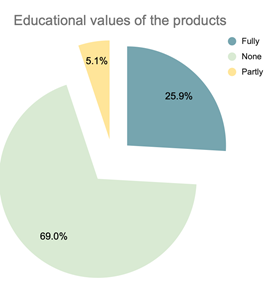
fig. 1 Educational value of the products
As mentioned before, there are a number of small characteristics in product presentation with large implications in the way museums are recognized online. These characteristics must be optimized to reach the online museum shops full potential. The first characteristic in product presentation is the presence of an educational value. In our research, where we took a diverse sample of 673 museum products sold in Dutch online museum shops, we saw that 69% of the products do not convey a direct educational value (see Figure 1). When analysing the products, we looked at the text provided in the product description and adjudicated an educational value considering the perspective of a shopper that has not seen the museum exhibition beforehand and therefore has no prior knowledge on the product. Providing products with an educational narrative would radically increase the perceived educational value of products for a wider audience, with various levels of capital. Most museum products have this narrative inherently by virtue of being part of a museum collection but this is not communicated via the shop. Museums could easily change the product’s narrative to improve this characteristic and to enhance their educational role.
A second characteristic identified is the specific environmental, health and social values that are conveyed through the products in the shop. We found that the product category Apparel scores relatively high on the various values. Products of this category often have a narrative describing environmentally friendly materials, include face masks in response to the current health concern, redistribute revenue fairly among the makers or forward profits to a specific charity to communicate social value. Few products communicated these values. We expect museums wanting to reach a younger engaged audience, with interest to voice their perspective on environmental, health, or social values, will consider such narratives along the products in their online shop. As in the previous case, adding a specific narrative to reflect the institutional values on products can be relatively easy.
In the third part of our research, we looked at how the products were displayed. In the physical shop, a customer can touch a product and see all its details while online museum shops rely on images and the overall presentation of the product collection to convey quality information for the consumer.
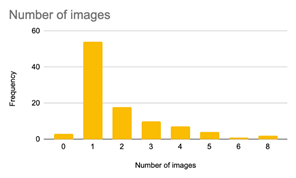
fig. 2 Number of images
We saw that most products are shown with only one picture (see Figure 2) while a handful of online museum shops displayed the products from multiple views and in use. The way the product is presented, in this case using various images, have an important effect on the perception of quality, as well as the values of the institution. We believe the quality of images to represent the product is worth considering. Museums have much knowledge in the digitization of their collections, it is to be expected that products in the museum online shop can also benefit from the basic sense of best practice regarding image representation.
In short, we argue that any individual in the world can benefit from ‘taking the museum home’ by making a purchase from the museum online shop, extending the educational value of the museum while providing additional revenue. It is only logical to expect museums to develop their shops after the pandemic. We strongly advise enriching the narrative and taking full care to curate the shop, with the same attention for the educational value of the museum as any other service provided. Future research lines can follow by looking into the actual sales by product characteristics and display, as well as consumer perception of the educational narratives provided.


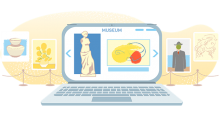
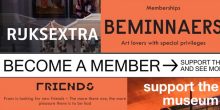

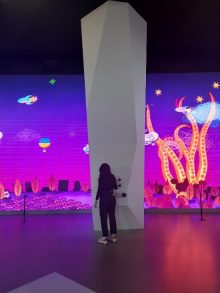
 If you have interesting news and events to point out in the field of digital cultural heritage, we are waiting for your contribution.
If you have interesting news and events to point out in the field of digital cultural heritage, we are waiting for your contribution.
























